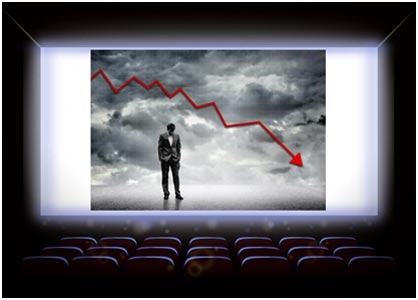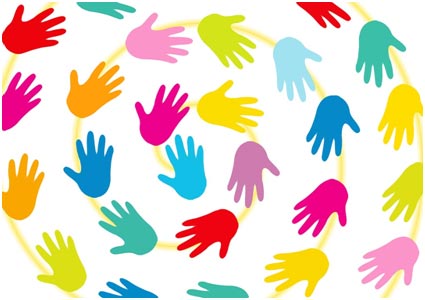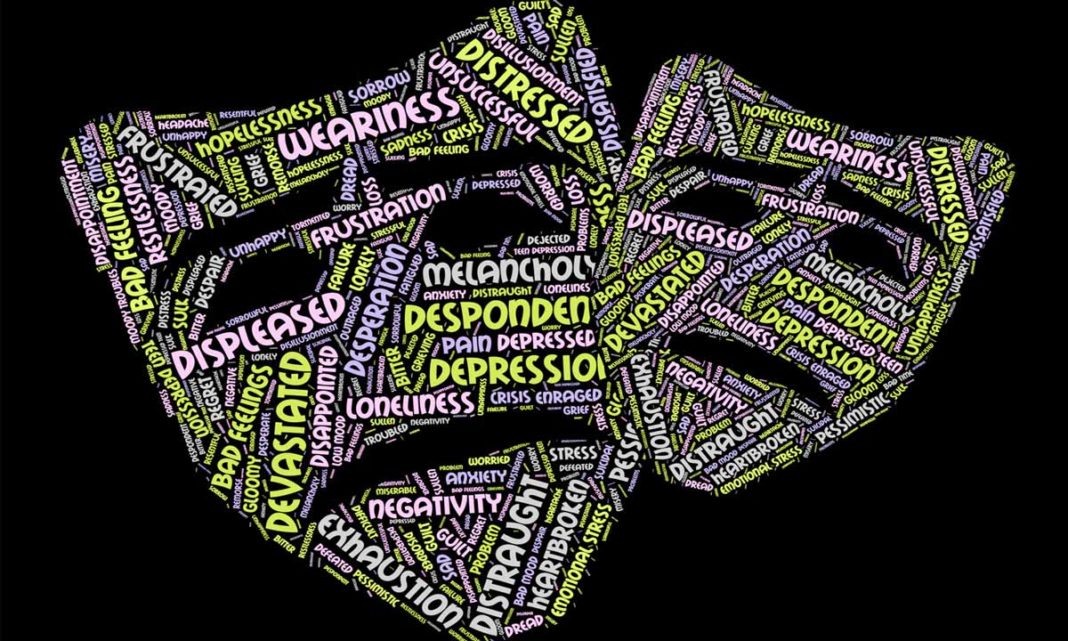It’s easy to assume a lot has changed in the American film industry since its inception over 120 years ago. As in mainstream American society, it’s undeniable that the film industry doesn’t look the same as it has in the past.
While that’s true in some ways, many of the same issues about the representation of minorities in films remain. Many of the same questions remain, too, with answers to them being far from what many fans want to hear.
Who’s Portraying Minorities?
There was a time that characters in blackface—mocking portrayals of African-Americans as inferior—were such a commonplace part of film that even sweet little Shirley Temple and the world’s most famous cartoon rabbit, Bugs Bunny, appeared that way. Blackface was even a feature of the first feature-length film with synchronized sound, The Jazz Singer. Along with yellowface representations of East Asians such as I.Y. Yunioshi in Breakfast at Tiffany’s, not to mention representations of Native Americans by actors in redface, classic blackface is rarely done now (and of course, it’s never acceptable, no matter the intention).
Instead, offensive portrayals of minorities persist in a more subtle but no less insidious form: whitewashing, when white actors are cast in non-white roles. (For a term that’s more inclusive of all kinds of minority groups being inauthentically cast, erasing is often used).
Whitewashing isn’t just about wearing shoe polish, either; it involves the whole person. And film history is rife with it.
What’s more, whitewashing’s impacts on the representation of minorities in film aren’t just broadly sociocultural. The practice prevents actual members of underrepresented groups from being hired for relevant roles, with lots of diverse actors available to work but being blocked by such miscasting.
While statistics show that the level of minority leads in the last two years (39.7%) has been proportionate to the overall population, pre-pandemic numbers show that only 17% of all movies released in 2019 depicted a lead or co-lead from an underrepresented racial or ethnic group. There’s no indication that post-pandemic numbers will be any different, either, with whitewashing still compounding the lack of authentic representation.
For LGB actors, straightwashing—the heteronormative on-screen portrayal of characters originally authored as gay or bisexual—represents how gender is portrayed in movies in skewed and discriminating ways. For transgender performers, ciswashing is a similar and just as troubling practice.
It’s no different for characters with disabilities being represented, either. Although nearly 20% of people have a kind of disability, only 2.4% of speaking or named characters were shown to have a disability, according to a recent pre-pandemic report. Considering such low numbers, any amount of erasing hurts the disabled community, especially, and cripface in contemporary films is certainly not uncommon.
Beyond the Big Six studios specifically, streaming movies indeed outdo Hollywood productions somewhat for how gender is portrayed in movies and for gender inclusion, especially. However, speaking roles for minority groups such as Middle Eastern and Native American women in these movies hasn’t proven to be any more prevalent.
How Have Minorities Been Portrayed Historically?
It’s easy to see examples of people from various minority groups in classic films being stereotyped through cookie-cutter roles. A complete treatment of such roles, including related stereotyped gender roles, would be too sizeable to include here, but here are just a few examples: African-American women as subservient mammies, jezebels or sassy sapphires; African-American men as happy slaves, magical servants, hypersexualized brutes, or goofy freedmen; East Asian men as extremely goofy, evil, or asexual; East Asian women as exotic, male pleasure-serving lotus blossoms or dragon ladies; indigenous people as the extremes of noble savages and uncivilized warriors; and Latinos and Latinas as vicious, criminal, lazy, or buffoonish.
Considering that many of these stereotypes still exist for the same minority groups, the representation of minorities in film isn’t significantly less caricatured or textured now than in the past.
Even when minority characterizations in contemporary films look much different than those of the past, the Big Movie bakery has simply morphed many of the old stereotypes into new cookie cutter shapes: African-American men are expendable by dying first or acting subserviently as the white lead’s best friend; African-American women are sassy (like only a mammy was allowed to be on a plantation); East Asian men are nerdy, goofy and sexually inept socially if not intellectually; East Asian women are tiger moms instead of dragon ladies; and Latinos and Latinas are hot-blooded.
Whether or not the current stereotyped representation of minorities in film is intended, tradition left uncorrected, or just the kind of cookie the established movie industry thinks fans want to consume, it ends up painting minorities as having a set of characteristics that are limited and thus easily controllable in a predominantly white world.
And this obviously needs to change.
How Often Do Actual Minorities Portray Minorities?
Despite the need for change, several myths underlie the continued misrepresentation or lack of representation of actual minorities in the established film industry.
Myth 1: Whitewashing is Ultimately What Fans Want
Some might point out that the most qualified actors are cast and that most of them, proportionate to the overall population, are white, thus making whitewashing not a kind of discrimination in movies. However, this supposed fact simply isn’t true. Instead, it’s a matter of how business is done and who does it most.
As author Jeffery Mio writes of this justification: “A lot of times ethnic actors will tell us that when they say we’re just choosing the best actor, they mean we’re choosing our friends, or people we’re used to.”
In this case, “they” refers to a group of people at the top who are 92% white, with 68% male.
How can discrimination in movies not be a reality?
Myth 2: Fans Don’t Want to See Minorities in Movies
Despite persistent myths such as “black doesn’t travel”—that white people are cast more because white stars are the ones bringing in the profits—fans do want to see movies with diverse casts.
Although more and more examples of movies such as Moonlight and Hidden Figures and, more recently, Black Panther, make such obviously out-of-touch traditions divorced from reality.
The metrics of fans preferring diverse casts only serve to reinforce this reality, too, showing them to be false justifications for discrimination in movies. Although one could say the pandemic explains how 41-50% minority casts have been doing the best and films with less than 11% minorities doing the worst, numbers just before the pandemic differ little.

Indeed, the $10 billion that movie studios could be earning with more diversity in casting—but aren’t—only underscores the damage that this myth creates for all stakeholders. Ironically, as film professor Mitchell W. Block writes, studios follow casting norms to please investors and producers.
What’s worse, it’s a sad irony for fans, who spend good money and much of their leisure time on movies, just to see minorities so misrepresented or underrepresented.
On a closer look, too, you’ll find more subtle problems with the representation of minorities in film, such as how the achievement of a few minority actors can mask systemic issues. Or how studios can promote a minority actor on the surface but then make them less than a headliner in the actual production.
Ultimately, one question remains—what can be done about these problems ?
Film.io: Towards a Movie Industry Everyone Deserves

It’s not true that no one has been doing anything about these problems. The established movie industry’s historical and continued lack of inclusiveness has become much more common knowledge over the last few years, and many organizations have pledged their support and activism for greater inclusivity and representation of minorities in film both offscreen and onscreen.
But Film.io is making an alternative movie industry to bypass the mainstream’s tangled path of minority representation altogether and head straight for the future.
While archaic but persistent traditions can overrule who fans want to see on screen and how they’re portrayed, fans always play the leading role at Film.io.
Not only do fans using Film.io’s movie crowdfunding platform choose which movie projects get made, they interact with creators directly and are continually kept apprised of what’s going on with their projects. The portrayal and inclusion of characters in projects on the platform are as textured, authentic and appropriate as creators and fans want them to be.
At last, discrimination in movies isn’t just made public as it sometimes is. Instead, it’s publicly prevented.
A closer look at Film.io’s system shows fans using FAN Tokens to make decisions on the platform’s blockchain, to support creators in participating in a variety of ways, and even donate to projects. Through their tokens, fans evaluate projects toward an aggregated ‘Go Score’ that helps greenlight which films get made.
In the process, fans show investors that the projects they support are worth investing in and market-validated. Projects become profitable while expressing and bolstering the inclusion and representation of minorities in film. Even better, investors don’t lose money due to decision-making that doesn’t consider inclusion and appropriate representation well enough or at all.
What’s more, transparent interactions and engagement run the show at Film.io, not unequitable and uninclusive practices and attitudes. And that’s because everything is done on a decentralized film financing blockchain, where what’s going on is always on view to everyone and not controlled by any individual or centralized entity.
With Film.io, it’s finally time to liberate creators and empower fans by allowing anyone from anywhere to create and experience the movies they really want.
Also Read:
- India joins the All-Russia Cinema Night 2025 Campaign
- Shah Rukh Khan Adds Bollywood Charm to DP World ILT20, Broadcast Exclusively by ZEE
- Indian Film Producers Seek Coproduction With Russia
- Fun Wedding Ideas For Unique And Quirky Couples
- Japan Opens Up To The Russian Film Industry – Tokyo International Film Festival
- Shubi Husain Among Awardees Of India’s National HealthCare Awards 2023

























